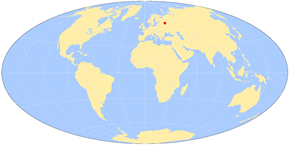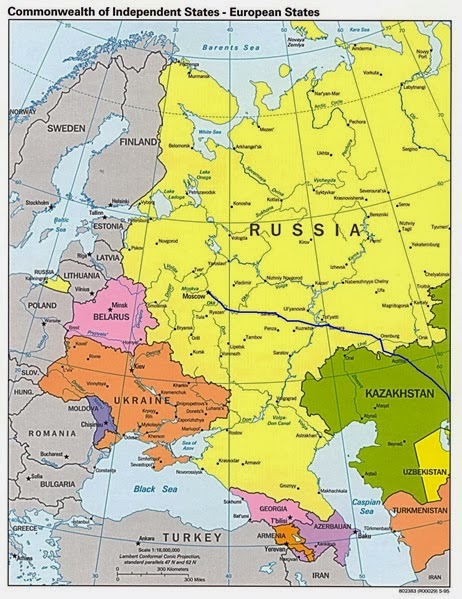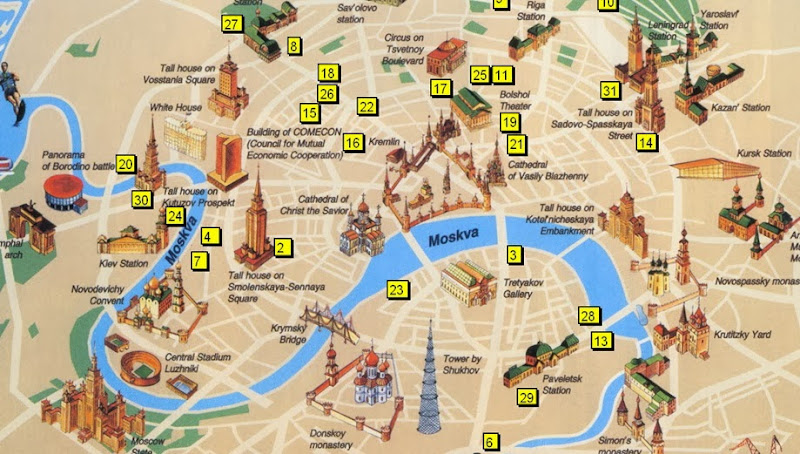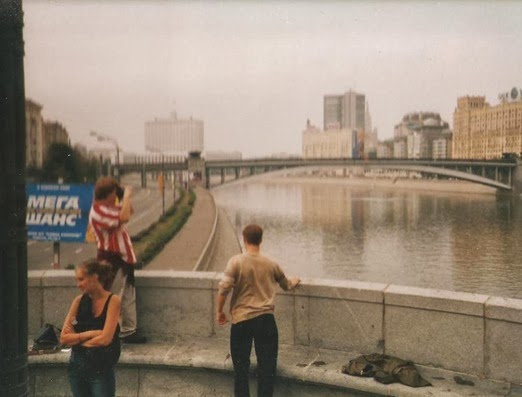Greetings!
Here in Stoke the nights draw in and it all gets a little colder. But thankfully, not as cold as Moscow where it can get to minus 20 or 30 in the winter. Thankfully, it wasn’t like that when we visited all those years ago, before heading onwards to Ukraine and the last part (next week) of Across Asia With A Lowlander.
Keep travelling!
Uncle Travelling Matt
Links to all parts of the travelogue
Book 1: Embarking Upon A New Korea
1e: Seoul, Incheon and Across the Yellow Sea
Book 2: Master Potter does Fine China
Book 3: Steppe to the Left, Steppe to the Right…
27th - 31st August, 2002 – Moscow, Russia
But of course, great and varied though Moscow’s many attractions undoubtedly are, there is one place that is one everybody’s list, one must-see, one site of pilgrimage for the world’s socialist faithful.
Red Square.
Any child of the Cold War will remember those vast parades of military might across those hallowed red cobbles, (from which the square gets its name, no I’m sorry to say, it is nothing revolutionary), the onion domes of St. Basil’s at one end and the towering wall of the Kremlin down the side. And in front of that wall was the one thing in Russia that I wished to see more than aught else.
Lenin’s tomb.
Vladimir Ilych Lenin. That diminutive, bearded gent whose visage is familiar across the globe. The man who masterminded those ‘ten days that shook the world’. The orchestrator of the first successful worker’s revolution and creator of the first socialist state. And thinker, and writer, and, (if you’re to believe the Soviet Era school textbooks), friend of all the little children a la Jesus Christ, and, (if you’re Inessa Armand), a great lover to boot.
A great man, yet a tiny man.
I entered the smart-soldier guarded gloom, turned left, turned right, and then turned right again. There he was. In an illuminated glass case. Even smaller than I’d imagined, yet less wax-like than I’d been led to believe. I gazed on that famous face. How often is it that one has the opportunity to view a person, (albeit dead), who has rocked the world? It was a moving experience. The sunlight blinded me as I re-entered the outside world.
After Lenin there was the opportunity to view some of the graves of the other great names in Soviet history; those who are commemorated in the Kremlin Wall. Foremost was Stalin who had once lain besides Lenin. Butcher of millions, winner of the Second World War. The man who’d inherited a USSR worked by the plough and left it with nuclear weapons. Then there was Gagarin, the first man in space, John Reed, the author of that ‘Ten Days’, Inessa Armand who’d also lain beside Lenin, though not in the mausoleum, and my favourite Soviet leader, the peasant who ended the terror, Nikita Khrushchev.
And from the temporal to the spiritual. Red Square might have been the heart of world atheism, but its most familiar landmark is dedicated to Christ. St. Basil’s Cathedral, oft portrayed as a random riot of colourful onion domes is actually entirely symmetrical. Its beauty and the genius of its architects was reportedly so great that when they had finished the work, Ivan the Terrible reportedly had their eyes gorged out so that they may never produce a work of such beauty. Its interior is a maze of dark passages which we filed around, occasionally bumping into one another unexpectedly and also coming across beautiful music sung by a choir in the haunting incense-filled central chamber.
But all things must pass and the time to leave the Russian capital soon came. First off was the Lowlander who was to catch a Swissair flight back to his homeland. I travelled with him on the metro line to the stop for Domodedovo Airport. So, how was it, leaving a travelling companion of over a month and a half? We’d done well considering. We never argued or came to blows once, although the stresses and strains of Uzbekistan had brought us both to the edge of our tempers, and in my opinion at least, we contributed positively to each other’s journeys. Well that’s what I think anyway, I’ll live him to give you his take on it all. I knew for one thing that I’d miss his company, even though I did have the Sibling and Hazel to fill his boots onwards to Varna. We shook hands firmly before he boarded the minibus that went onwards to the airport itself.
And then it was our turn. We went to Yevgeny who sorted us out with tickets onwards to Bucharest and also checked at the Ukrainian Embassy about our visa situation. The Ukrainians in London and Tokyo had said that if we had a ticket onwards to a destination beyond the Ukraine, then we needed no visa, and the Ukrainians in Moscow confirmed this. Great! We were on the home straight now, and the way was clear to Bucharest! And so it was that we were waiting in the vast and gorgeous hall of Moscow’s fine Kievskaya railway station for a train to the grainlands and beyond.
As I wandered around that fine Palace of the People with its murals of the Ukrainian SSR and gigantic statue of Lenin looking boldly towards his old domains, I mused upon the experiences of the last three weeks or so, my first visit to former Soviet territory, the lands that I’d always longed to visit.
I’d expected a lot. And I was delivered a lot. Not necessarily what I’d expected, but a lot nonetheless. As I’ve explained before, the USSR had long held a place in my heart and that was always going to be difficult to live up to. Yet Moscow had lived up to it, and more besides. I shall not bore you reader, with more odes and praise directed towards that famous capital. What I said before, that no other city that I’ve had the good fortune to visit, matches her, is all that one needs to know.
But the rest of the Soviet Union, (ok, so it’s fifteen different countries these days, but allow an old romantic some license), what of it? Perhaps the most overwhelming factor is the size. Those visitors who come back from the USA informing us all about the sheer size of some countries, they know nothing. You could fit four or more USAs into the former USSR. Six hours on a train here is a local journey. We travelled for four days and yet our trip was not huge by Soviet standards. Two of those days were in Russia itself and we travelled through an area of the country comparable in percentage to if we’d visited Britain and journeyed only from Dover to London. In other words, we’d seen nothing. The size, the unchanging landscape, the countless villages and towns. The human mind cannot comprehend it. Leastways, mine cannot.
And the politics and economics. Perhaps I still cling to the USSR identity so much since, (Moscow aside, it was a completely different story there), not a lot seems to have changed. Here in Eastern Europe, even lowly and lagging behind Bulgaria, things are moving. The days of socialism are but an ever-retreating dream. Yet in the Soviet Union, particularly Turkestan, it is as if it all ended yesterday, if at all. Indeed in those countries, I am sorry to say, but indeed anything good seems to be Soviet. Nothing seems to have been developed since 1991 bar a (bankrupt) Daewoo plant and a worrying explosion of nationalism. If anything they’ve retreated, particularly Turkmenistan with its astonishing personality cult, back to the dictatorial days of Josef Stalin. And yet it’s a strange, incomplete retreat. The religion for example, once an overwhelming force in conservative Bukhara and Khiva, now seems to be in name only. Little Muslim piety or Islamic habits did we witness during our trip. In fact, if anything, only the Orthodox Russians who filled their cathedrals in Almaty and Moscow, seem to have undergone any sort of religious revival. No indeed, those are strange lands. Not backward, yet somehow stuck in the past. And for all its faults, for Central Asia at least, the greatest tragedy of the Soviet Union is that it’s not still there. Then perhaps there might be hope for the future. Tragically at present, I can see none.
But that was all behind us, and as we boarded the big blue train that was to ferry us to a new land, it was time to say goodbye to Orthodoxy’s Third Rome and turn our thoughts instead to another ex-Soviet Republic, the former grain-basket of the Union and cradle of Slavic culture: The Ukraine.
Next part: 3n: Konotop to Varna






No comments:
Post a Comment